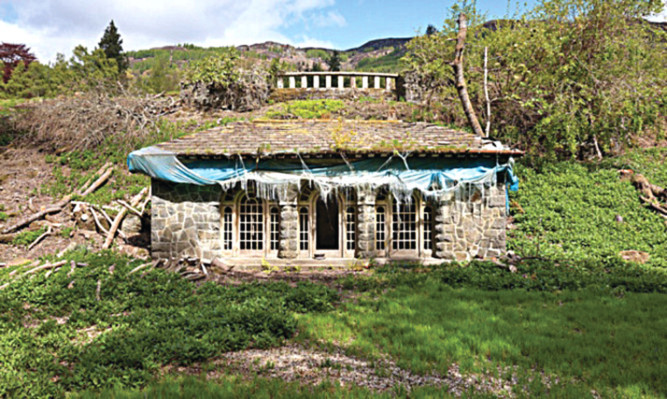Scotland’s “most beautiful” garden lost to the wilderness for more than 60 years needs a new owner to restore it to its former glory.
Dunira Estate dubbed the “finest garden in Scotland has come on the market for £750,000 but will only be sold to a buyer who promises to restore the grounds.
The Perthshire property was bought in 1784 by Henry Dundas, the 1st Viscount Melville, above, as a refuge from his life as a controversial Edinburgh politician.
In the 150 years that followed, the estate was endowed with incredible architectural constructions, huge water features and stunning showpiece lawns.
But by the early 20th Century the gardens were described by Thomas Mawson the most respected gardener of the age as “one of the most beautiful estates it has ever been my pleasure to study”.
But after a fire destroyed the estate mansion in 1947 the garden fell into disrepair and was given up to the the wild countryside which surrounds it.
Now the “lost garden” estate is on the market for £750,000 and the seller is searching for an avid and ambitious gardener with the vision to restore it to its former glory.
The estate is being sold with planning permission to build a new mansion in the grounds on the condition that the impressive gardens are also restored.
Its current owner David Hustwayte has said he originally took on the site as a project eight years ago, but it has since proved too ambitious for him.
He said: “The buyer would need to be somebody who is enthusiastic about gardens and (has) a brave heart.
“It could be wonderfully restored the basics are all still here”.
The overgrown ruins of the garden date back to 1784 when it was bought by Henry Dundas a controversial figure in the political scene of 18th Century Scotland.
He was variously described as the “uncrowned king of Scotland” and “the absolute dictator of Scotland” as a result of the power he wielded as the first ever Secretary for State for War.
He set about transforming the lands between Comrie and St Fillans into incredible scenic gardens, complete with woodland walks and bridges over serene burns.
The estate then passed through the hands of a number of other noble owners including Dundas’ own son who rendered the gardens even more stunning.
In 1827 a walled garden was added, before formal terraces were built in 1852 and a “pinetum” an impressive array of pines were planted in the 1870s.
In 1920 the estate was given over to Thomas Mawson then called the “Capability Brown of Empire” to design as he saw fit, with no expense spared.
